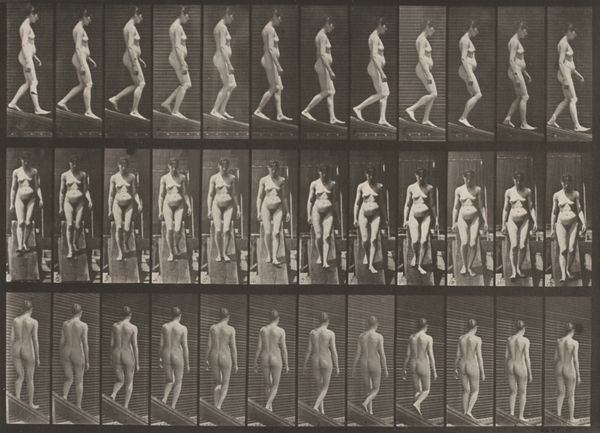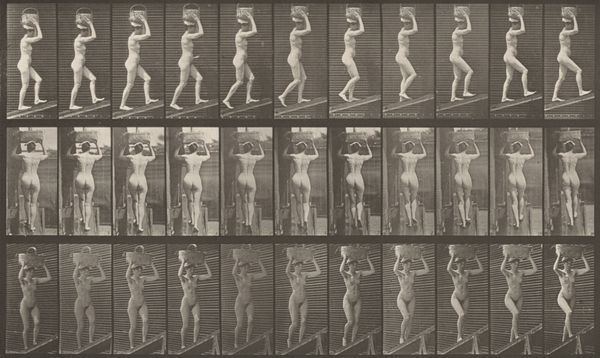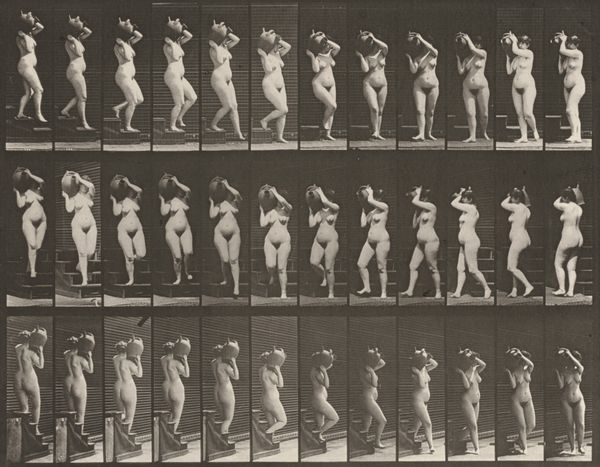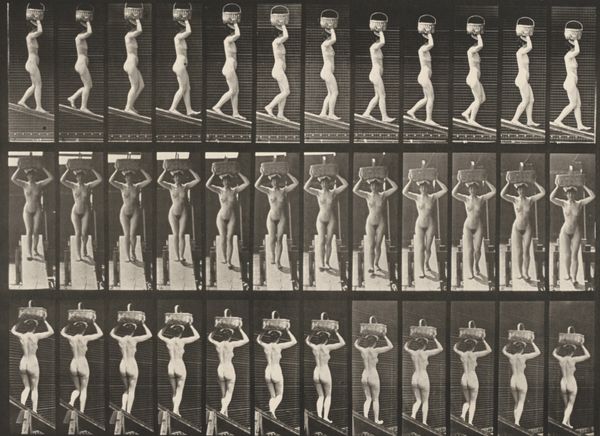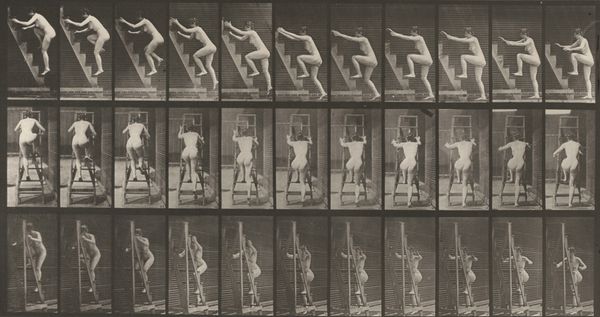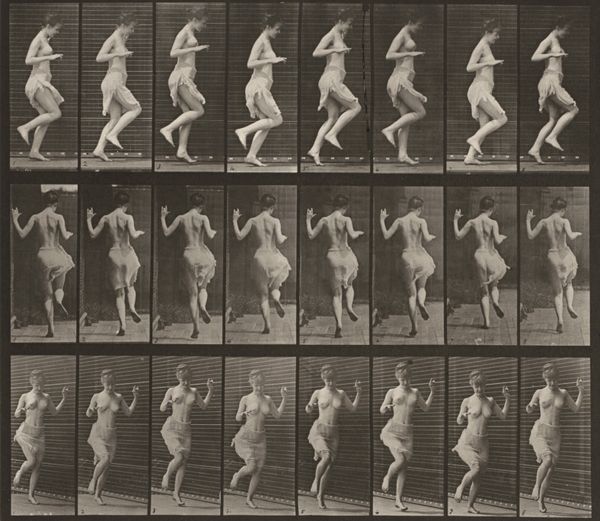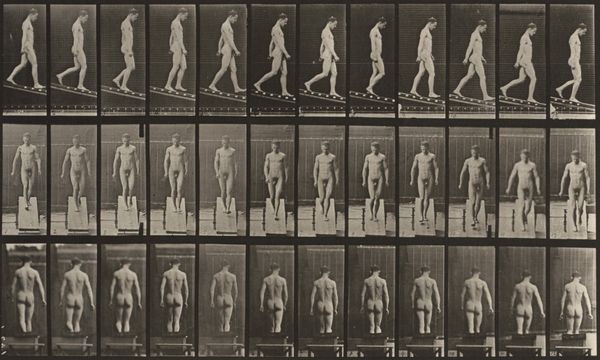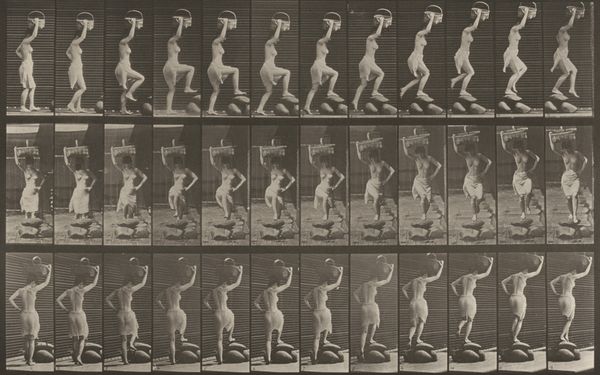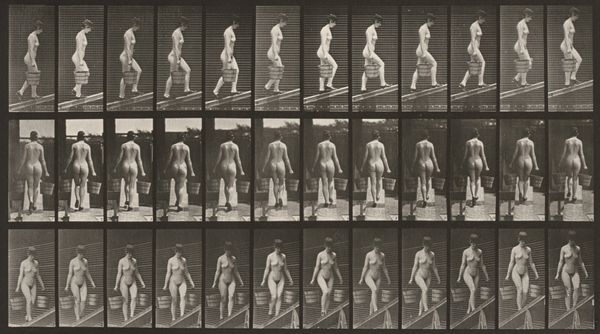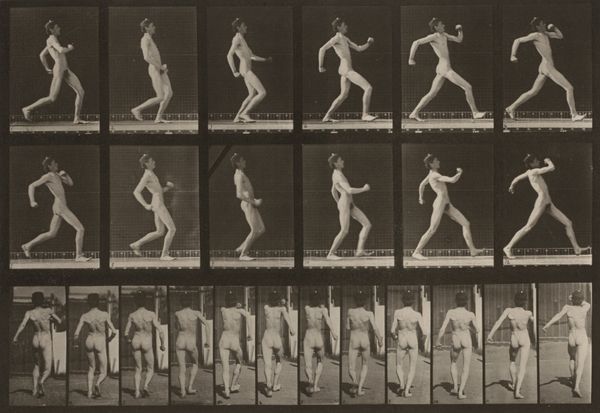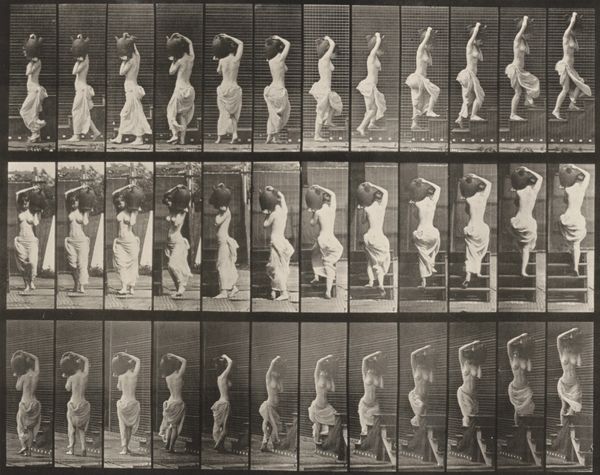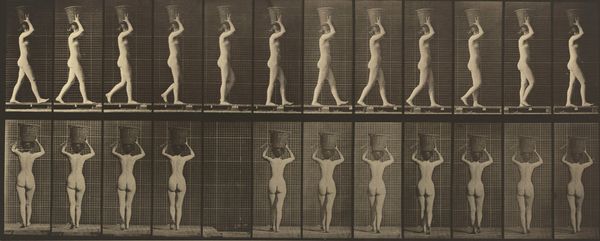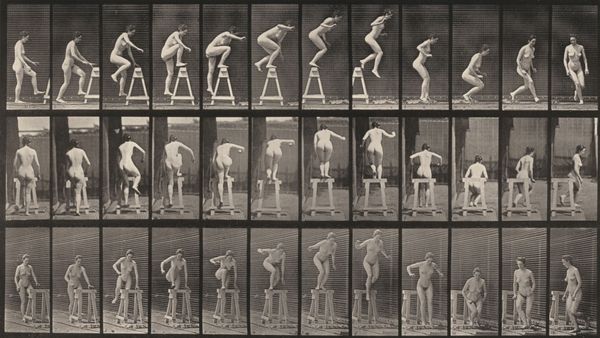
Plate Number 123. Descending an incline with a 20-lb. basket on head, hands raised 1887
0:00
0:00
print, photography, albumen-print
#
kinetic-art
#
pictorialism
# print
#
photography
#
nude
#
albumen-print
Dimensions: image: 23.25 × 32.05 cm (9 1/8 × 12 5/8 in.) sheet: 47.8 × 60.4 cm (18 13/16 × 23 3/4 in.)
Copyright: National Gallery of Art: CC0 1.0
Curator: Looking at Muybridge's 1887 albumen print, titled "Plate Number 123. Descending an incline with a 20-lb. basket on head, hands raised," the first thing that strikes me is its relentless documentation of human movement, distilled to near abstraction. What do you think? Editor: Initially, I find it clinically detached, even cold. The sequential layout creates this sense of a scientific specimen under observation, dissected into fractions of movement. Curator: Exactly! It's like he's trying to unlock the secret code of walking. There is almost an innocence in that pursuit. However, you cannot deny the exploitative dynamics surrounding these series of photographic studies. Editor: Agreed, the backdrop whispers stories of 19th-century scientific positivism intertwined with deeply entrenched social and power dynamics. Who gets to observe whom? How is this study divorced from broader social control mechanisms? It's unsettling, but the work functions as a reminder to think critically about objectivity. Curator: I see what you are getting at... It's so human, the slight wobble, the imperceptible adjustments, and I imagine myself inside it—trying to find beauty where other might see none. Also, she manages to keep her posture even descending. This image is also a record of human perseverance. Editor: It raises important questions about who this technology served. We need to acknowledge the layers of gender, race, and class intersecting here. This wasn’t just about science, but about solidifying existing structures through its seeming objectivity. Curator: Absolutely! Looking beyond the layers you unveiled, it also whispers secrets of form and weight—almost sculptural! Editor: Indeed, and it’s that tension between its form and its potential function as evidence in shaping ideas of race, gender, and ability that I think is so vital. Curator: It becomes so much more, doesn't it? A dance, a question, a mirror reflecting the best, and worst, of our impulses to define the world around us and, tragically, each other. Editor: Precisely. A complex reminder that aesthetics can’t be divorced from ethics, or history from the present.
Comments
No comments
Be the first to comment and join the conversation on the ultimate creative platform.
